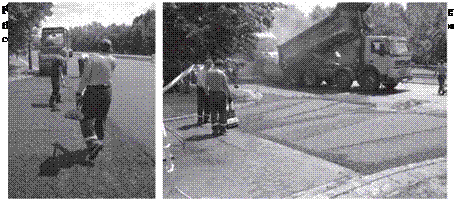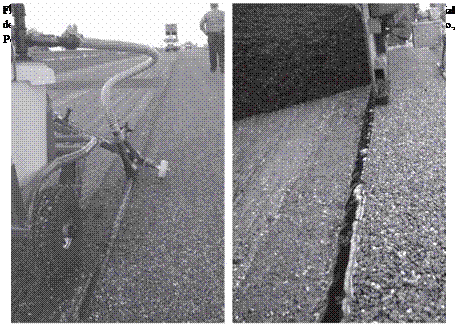Almost all publications on SMA underline the necessity of carefully observing the temperature of the mixture during placement and rolling. The expected range of mixture temperature is determined in different ways; it chiefly depends on the kind of binder, but such factors as the layer thickness and weather conditions are important, too. However, the most important factor is the temperature of the mixture delivered to the construction site and the temperature at the end of effective compaction, below which further rolling becomes ineffective and even harmful.
Minimum temperatures for mixture supplied to a work site according to the European standard EN 13108-5 (which applies only to selected [unmodified] bitumens after EN 12591) are as follows:
• 160°C for paving grade bitumen 40/60
• 150°C for paving grade bitumen 50/70
• 140°C for paving grade bitumen 70/100
In the German DAV SMA handbook (Druschner and Schafer, 2000), the aforementioned temperatures are presented in a more general way; the suggested temperature of an SMA mixture in a paver hopper should not be lower than 150°C. The same rule is presented by Bellin (1997).
Different temperatures at the end of the compaction time have been assumed in various publications, from 80-100°C for ordinary binder, and from 120-138°C for modified ones. The U. S. NAPA SMA Guidelines QIS 122 stipulates no rolling when the temperature of a layer drops below 116°C. A temperature of about 100°C has been stated in German documents as the point at which to stop rolling. The minimum temperature at the end of the compacting time may be roughly calculated by adding 50°C to the Ring and Ball (R&B) softening point of the binder used in the mix (Daines, 1985; Read and Whiteoak, 2003).
Other relevant points include the following:
• Problems related to a mix temperature that is either too low or too high are elaborated on in Chapter 11. Additional comments may be found in Section 10.4.2.5, which deals with rolling time.
• Optimum compaction temperatures are related to the viscosity of the added binder. That implies the significance of not only the lower temperature limit of rolling but also the initial temperature of rolling (already described while discussing SMA laydown on a hot underlying layer). A mixture that is too hot also causes problems at placement.
• Remember that spreading mixtures with substantial temperature differences (e. g., from a truck with a hot mixture alternated with another truck with a cool mixture) cause changes in the resistance offered by such mixtures at spreading.
• Appearing here and there in a layer being placed, pieces of a cool mixture may cause the development of an increased content of air voids and hence decrease the pavement’s lifespan (Pierce et al., 2002).
All these remarks concerning temperatures do not apply to cases that involve the use of special additives for lowering mixture temperatures that create the so-called warm mixes.







